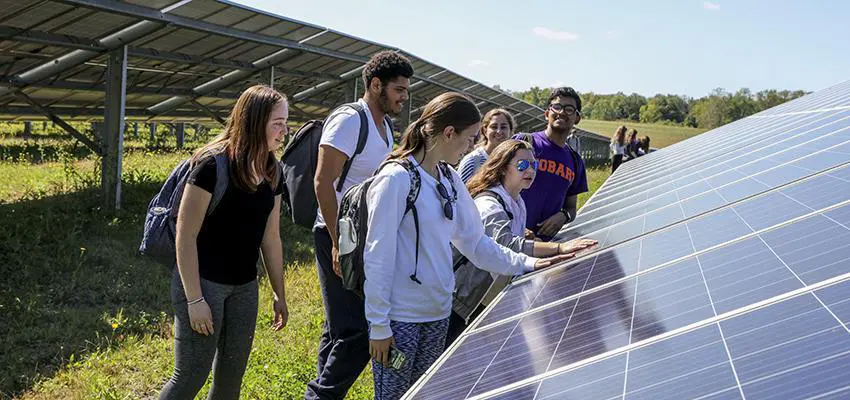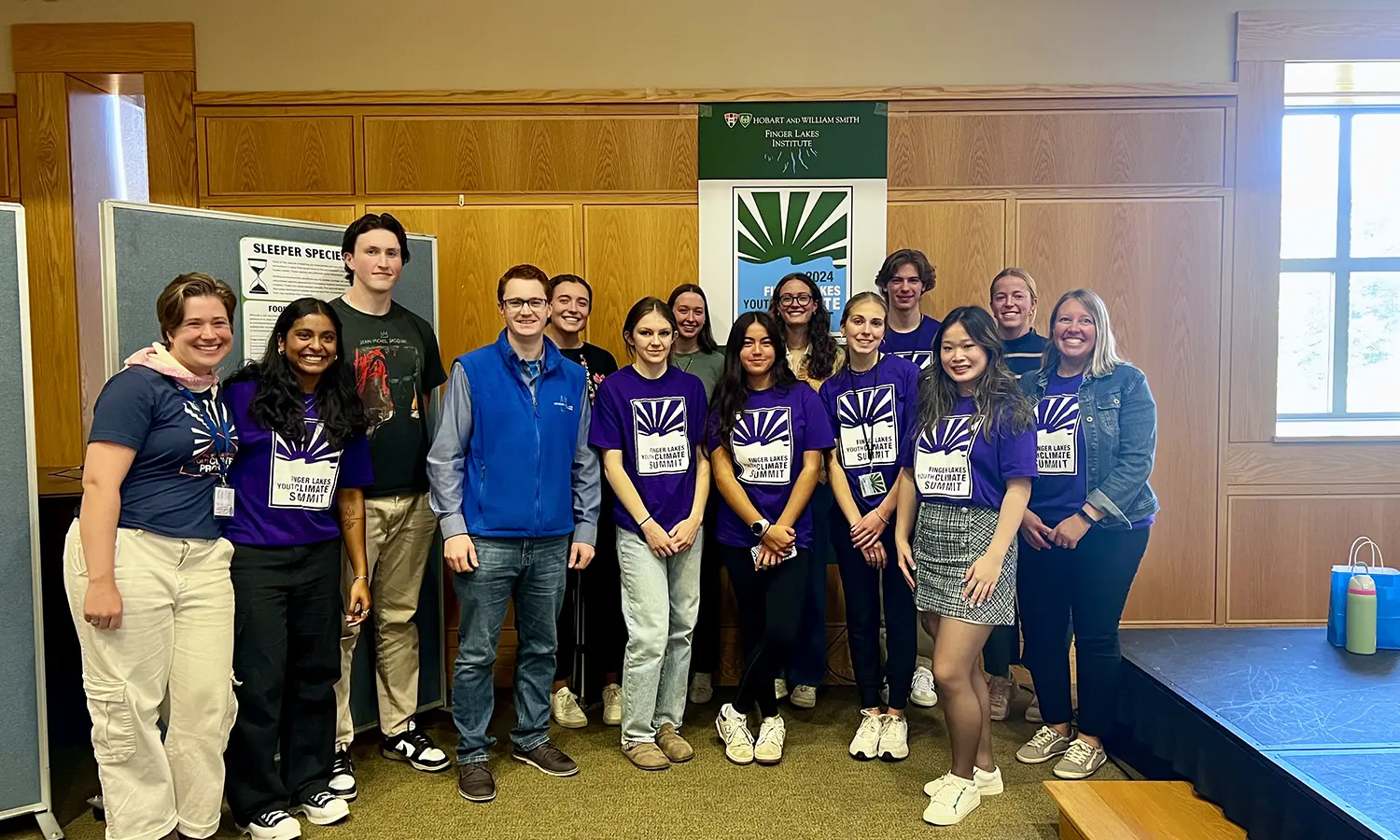
HWS News
22 January 2024 • STEM Countdown to the Total Solar Eclipse: T-minus 3 months: Using the Sun’s Energy
It is less than 3 months until the total solar eclipse in Geneva! Let’s talk about how sunlight is the ultimate source of energy for the biological and geological systems on Earth.
The Sun’s light streams continuously from its surface into outer space, in every direction every second of our lives, without interruption. This light carries energy along with it. However, only one two-billionth of the light emitted by the Sun each second is traveling in just the right direction to impact the Earth. This tiny fraction of the Sun’s light is the primary source of energy that drives the biological and geological systems on Earth. Multiple natural organisms and human-made technologies turn this sunlight into usable forms of energy.

Nearly all living organisms on Earth get the energy they need to exist from sunlight – either directly through the process of photosynthesis or indirectly by consuming photosynthetic organisms. The most common type of photosynthesis occurring on the Earth today is the process by which plants use the energy in sunlight to convert water and carbon dioxide into simple sugars, such as glucose, and oxygen. Glucose provides the chemical energy necessary to sustain the plant, and oxygen is a byproduct that we use to sustain us! The sunlight that strikes a plant leaf is absorbed by specialized pigment molecules called chlorophyll. Its energy causes the splitting of water molecules (H2O) in the plant into individual hydrogen and oxygen components. Two molecules of water become one oxygen molecule, and the resulting hydrogen is separated further into protons and energetic electrons. The oxygen is released, and the protons and electrons become part of the next phase of the complex process that converts carbon dioxide into the desired sugar. Realistically, around 6% of this solar energy striking the leaf is converted through photosynthesis into the chemical energy stored in sugar.

HWS has two solar farm locations that generate 50 percent of the campus' electricity: one located on Route 14N and the other on Gates Rd.
Human-made solar cells, also known as photovoltaic cells, serve a similar role as green plant leaves, but instead of converting sunlight into chemical energy to sustain the plant, they can be used to convert sunlight into electrical energy to sustain our technological lifestyles. The sunlight that strikes a solar cell is absorbed by a specialized material called a semiconductor. Its energy is transferred to electrons in the semiconductor causing them to break free from the bond that attaches them to the bulk material. The stacking of positively and negatively charged semiconductor material to construct the solar cell allows the electrons that are released to flow through the material generating electrical current. This technology currently supplies around 2% of the total energy usage in the U.S.
In the City of Geneva, we use around 300 million kWh of electricity and natural gas energy each year, but 14 billion kWh of solar energy shines down on the area of our city in the same time period (accounting for seasons, latitude and typical cloud cover). It would take around 800 acres (or 1.25 square miles) of green leaves to produce enough energy to run our town through photosynthesis (if that was even possible). An area of half that size of densely packed solar cells with a total efficiency of 12% could do the same thing.
Stay tuned for more about the Sun as the total solar eclipse in Geneva, N.Y. approaches!
Best Regards,
—Leslie Hebb
Associate Professor of Physics, researcher of the fundamental properties of stars and extrasolar planets, the formation and evolution of planetary systems and the magnetic activity on low mass stars.



